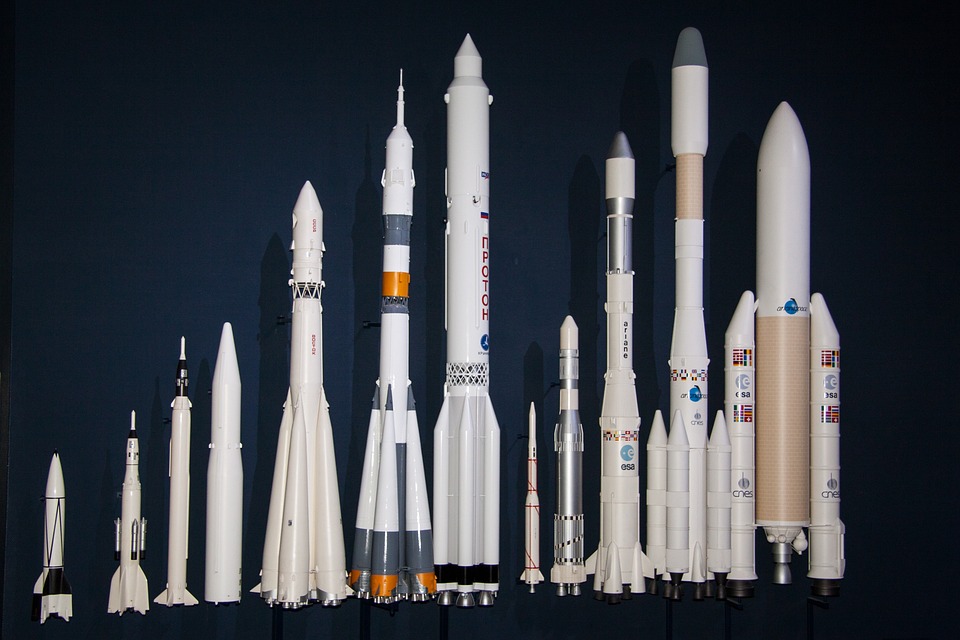Contemporary life would hardly be possible without satellites. Much of what people do on Earth today relies heavily on what’s happening high above their heads – from monitoring wildfires, deforestation and sea-surface temperatures to enabling connections to new mobile technologies like 5G in hard-to-reach areas.
A recent wave of cheaper, miniature satellites being sent into low orbits of 500 to 1 000 kilometres above Earth by the likes of Elon Musk’s SpaceX and UK-based OneWeb signals a growing trend.
Less is more
With some tracking the globe’s whole landmass and providing unprecedented detail, these satellites can be the size of a shoebox or even smaller. More than 2 500 of them are expected to be launched each year on average over the next decade.
To reach space economically, small satellites often need to rideshare on large rockets. Developing smaller rockets could allow faster, more personalised access to space, opening up the market to a wider range of specialist providers.
‘Small satellites can travel on big launch vehicles, but there are problems like time to orbit because you need to book a slot far in advance and going exactly where your satellites need to go,’ said Xavier Llairó, chief commercial officer and co-founder of Pangea Aerospace in Barcelona, Spain. ‘The companies launching these need tailored access to space.’
The EU-funded RRTB project led by Pangea has been investigating cost-effective ways to put small rockets that can carry up to 500 kilogrammes of cargo into space. The hope is to have an engine ready for flight by 2025.
The key is to find ways to reuse these microlaunchers by minimising the impact they undergo on re-entry into Earth’s atmosphere and by enabling them to land safely. This would also be more environmentally friendly than using launchers just once.
‘Through reuse, you can lower investment, use fewer production means and have higher launch frequency,’ said Llairó.
At the moment, Europe lacks a proven method for doing this, according to RRTB, which ends this month after three years.
First section
RRTB has focused on reusing the first section – or stage – of the rocket, located at its base. This section provides most of the thrust straight after launch, before detaching and falling back to Earth, often into the ocean. With a lighter load, the rocket’s other stages press on to take their cargo into orbit.
“
Aerospike technology will change how we access space and how we come back to Earth.
But the first stage can be damaged during its high-speed descent back through Earth’s atmosphere and also by seawater. The difficulties and costs of retrieving and returning the rocket to the launch site may be more trouble than it’s worth.
‘When they fall into the sea, it makes reusability very, very hard,’ said Llairó.
The answer is to find a way for the first stage to re-enter Earth’s atmosphere safely and land at a docking base near the launch site or on a floating barge, according to Llairó.
At the same time, the design of the rocket needs to allow it to carry a payload big enough to make the operation economically viable.
To find ways to reduce the damage to micro-launchers during re-entry into Earth’s atmosphere and landing, the RRTB team has tested a scaled-down model of a small rocket in a wind tunnel.
Aerospike tail first atmospheric reentry. © Pangea Aerospace, 2023
The ideal goal for smaller launchers, according to Llairó, is to avoid the engines firing up for re-entry. That would allow launchers to transport a larger initial payload by reducing the weight of fuel they need to carry.
New nozzle
The team struggled when the rocket had a traditional bell-shaped nozzle around its engine, but found more promise with a cone shape. This “aerospike” nozzle helps spread heat in a way that lessens the pummelling the vehicle takes.
‘It makes it smoother to penetrate the atmosphere,’ said Llairó. ‘This is not only valid for small launch vehicles but also for larger ones. It was an unexpected finding because we were not initially looking for this.’
While aerospikes also burn less fuel than conventional engines, Llairó said these benefits until now have been offset by the complexities and costs in engineering them, including difficulties with cooling. Nonetheless, techniques like 3D printing – which is being harnessed by Pangea – are making them more viable.
‘Aerospike technology will change how we access space and how we come back to Earth,’ said Llairó. ‘It is a major enabler for rocket reusability.’
Meanwhile, he said, the engine that the team plans to use will rely on bio-sourced methane as a propellant.
The quest is also on to make individual rocket parts more reusable, for example with aluminium-based material for the fuel tanks.
‘You need to land most rockets safely and reuse as many of their components as possible to make things economically viable,’ said Llairó.
Primed for launch
“
Orbex Prime is set to be the world’s most environmentally friendly space rocket, powered by a renewable biofuel.
While RRTB has focused on rocket reusability, aerospace company Orbex in the UK is preparing to debut its own lightweight, eco friendly, microlauncher.
Under the EU-funded PRIME project, Orbex in May last year unveiled a prototype of its 19-metre-long rocket – set to be Europe’s first full-orbital microlauncher for small satellites.
The rocket is also designed to be reusable through recovery of parts that don’t burn up in the atmosphere. While the firm is not yet revealing how it will do this, a spokesperson for Orbex said the method would be ‘completely novel’.
The company hopes the Prime rocket can undertake its first launch this year, pending certain prerequisites including the granting of a launch licence.
‘We have already sold a number of launch slots to commercial satellite providers, but have yet to announce the date of our inaugural launch,’ said Orbex Chief Executive Officer Chris Larmour. He was also coordinator of PRIME, which ran for three years through June 2022.
Greener rocket
The rocket will use clean biopropane fuel formed as an additional product in the creation of biodiesel, which is made from sources like waste vegetable oils and used cooking oil.
This will be combined with liquid oxygen, a ‘‘cryogenic propellant’’ – a gas chilled to sub-freezing temperature and condensed into highly combustible liquid.
Through these measures, the rocket could lower carbon emissions by up to 96% compared with similar-sized fossil-fuel-powered launch vehicles.
‘Orbex Prime is set to be the world’s most environmentally friendly space rocket, powered by a renewable biofuel,’ said Larmour.
The fuel tanks are made from carbon fibre, which combines high strength with low weight.
Orbex estimates that Prime weighs about 30% less than traditional launchers, enabling the type of higher efficiency and performance crucial for small satellites. Furthermore, the rocket is designed to leave zero debris on Earth and in orbit.
At its spaceport in Sutherland on Scotland’s northern coast, the company expects to be able to launch up to 12 rockets a year. The port is also expected to be carbon-neutral in its construction and operation.
Its relative proximity to Glasgow will help capitalise on the area’s burgeoning space industry, with the city producing more satellites than anywhere else in Europe. Orbex believes this will offer the right setup to help the region’s players get airborne.
‘The satellite industry and its requirement for launchers that can put satellites into specific orbits has grown in recent years and continues to grow exponentially,’ said Larmour. ‘This creates a huge demand for dedicated and sustainable launches.’
Research in this article was funded by the EU. If you liked this article, please consider sharing it on social media.



